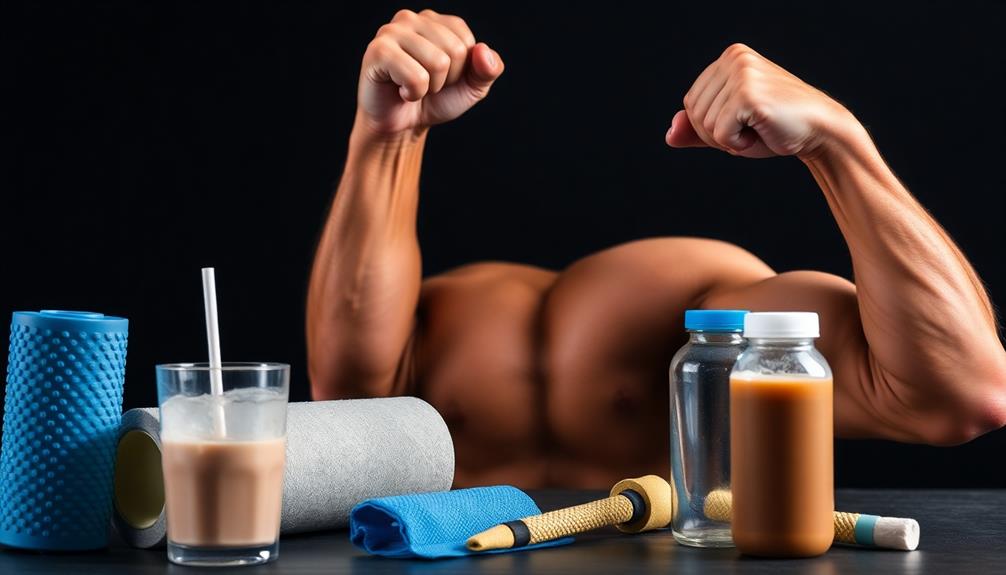To minimize soreness after hypertrophy training, start by gradually increasing intensity and using proper warm-up routines. Consume protein post-workout and stay hydrated before and after. Engage in active recovery techniques and apply cold or heat therapy. Prioritize quality sleep and rest days. Incorporate anti-inflammatory foods into your diet and consider targeted supplements. Use foam rolling and stretching to ease muscle tension. Remember to listen to your body and adjust your routine as needed. By implementing these strategies, you'll reduce muscle soreness and improve recovery time. Let's explore each tip in more detail to maximize your training results.
Core Insight
- Implement a progressive training approach, starting with lighter weights and gradually increasing intensity over time.
- Focus on proper nutrition, consuming protein and simple carbs post-workout to support muscle recovery.
- Stay well-hydrated before, during, and after workouts to reduce muscle soreness and promote recovery.
- Utilize active recovery methods like light cardio, yoga, or foam rolling to enhance blood flow and reduce stiffness.
- Prioritize optimal sleep and rest, aiming for 7-9 hours of uninterrupted sleep and incorporating rest days into your routine.
Gradual Intensity Progression
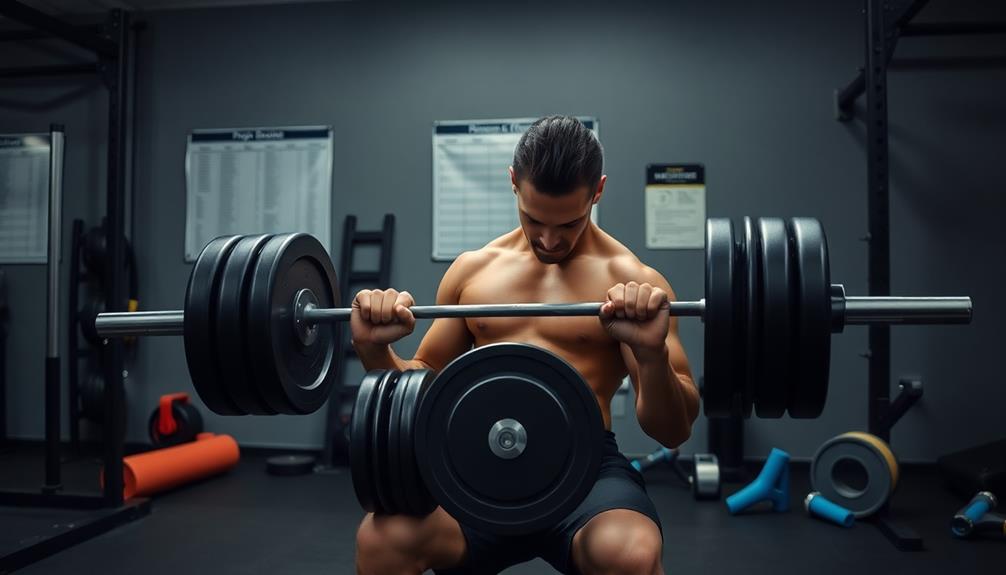
When you start a muscle-building program, slowly increasing the difficulty is important. This helps limit soreness after your workouts. Begin with lighter weights and do fewer sets. Over time, you can gradually increase the weight, sets, and reps. You may also want to try safe supplements that can help your muscles recover and grow.
For each exercise, start with a weight that's about 60-70% of the heaviest weight you can lift for one rep. Pay attention to using good form and controlling the weight. As the weeks go by, increase the weight a little bit at a time, by about 5-10% per week. This gradual increase allows your muscles and joints to get used to the stress without getting too sore.
Take your time and don't rush. It's smarter to make slow and steady progress than to do too much too fast and get hurt or burnt out. Pay attention to how your body feels and make changes if needed. Remember, the goal is to keep improving over the long run while avoiding excess soreness.
Proper Warm-Up Routines

A good warm-up is key to reducing soreness after your workout. Start with 5-10 minutes of light cardio, like walking or jogging, to get your heart pumping and blood flowing. Then, do some dynamic stretches for the muscles you'll be using. Think arm circles, leg swings, and twists. If it's hot out or you're going hard, a cooling towel can help you stay comfortable.
Next, do some light exercises to activate the specific muscles you'll be training. For example, if it's chest day, try a few pushups or band pull-aparts. Finally, before your main lifts, do some warm-up sets with lighter weights. This gets your body and muscles ready for the tough work ahead.
Don't skip your warm-up! It's not a waste of time. It helps you perform better and recover faster.
Post-Workout Protein Intake
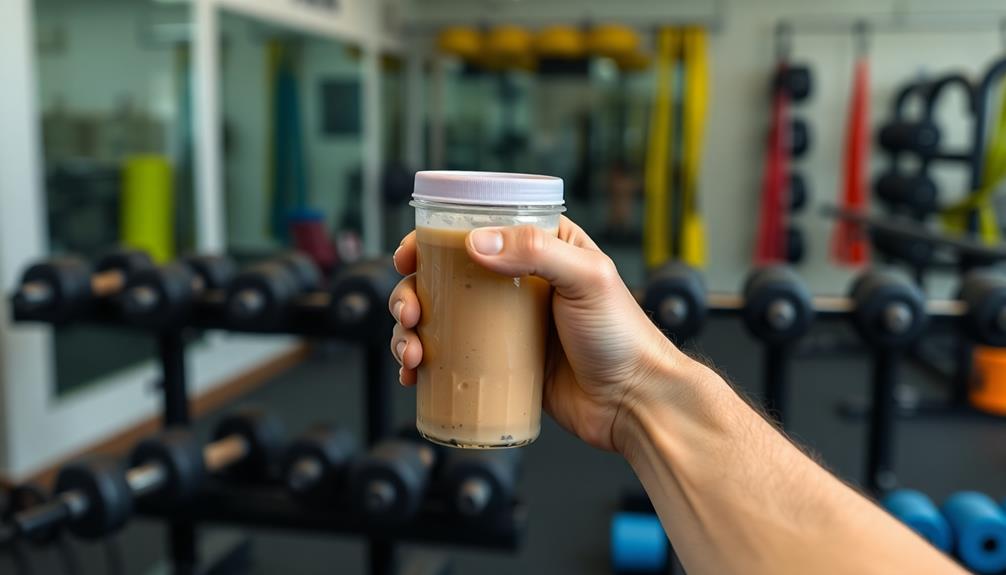
Eating protein after your workout is crucial for muscle recovery and growth. To reduce soreness and support your gains, try to eat 20-30 grams of protein within 30 minutes of finishing your training. Good options include protein shakes, Greek yogurt, or lean meats. Whey protein powders are a great choice since they usually have around 25 grams of protein per scoop. Many also have BCAAs, which can help with recovery and reduce bloating.
Your body is primed to use protein effectively after exercise, so take advantage of this window. Pair your protein with some simple carbs to refuel your muscles and support protein synthesis. Make this a consistent habit, and you should notice better recovery and less soreness over time. If you need help figuring out how much protein you need, talk to a nutritionist or trainer for guidance tailored to your goals.
Hydration Before and After
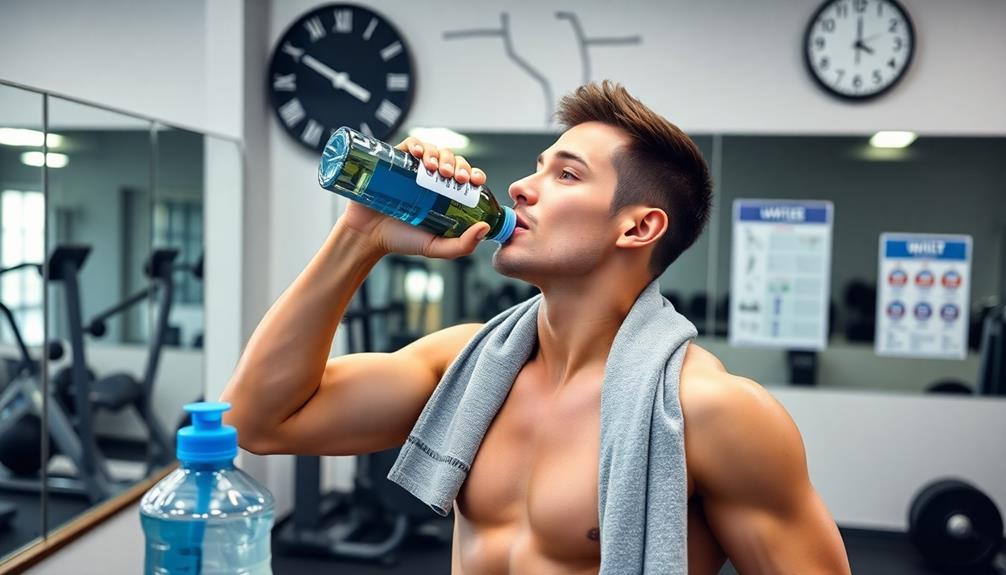
Staying hydrated is key to reducing muscle soreness after strength training. Make sure to drink water before and after your workout. Try to sip water regularly in the hours leading up to your session. Keep drinking to replace fluids after you finish exercising. Use this easy chart to know how much to drink:
Before Training (2-3 hrs): 16-20 oz water
Before Training (15 min): 8-10 oz water + electrolytes
During Training: 7-10 oz water + electrolytes every 10-20 min
After Training: 16-24 oz water + electrolytes per pound lost
Active Recovery Techniques

Active recovery is a key part of your post-workout routine. It helps reduce muscle soreness and speeds up healing. Instead of resting completely, do some light, easy activities to keep your muscles moving. Here are a few things to try:
- Light cardio: Take a quick walk, go for a swim, or hop on a bike for 20-30 minutes at an easy pace.
- Yoga or stretching: Do some simple stretches or yoga moves to boost flexibility and blood flow.
- Foam rolling: Use a foam roller to gently massage sore muscles and relax tension. High-density foam rollers work best for deep tissue massage. They help ease muscle knots, improve blood flow, and lessen soreness.
- Bodyweight exercises: Try light squats, lunges, or push-ups at half your usual intensity.
- Sport-specific drills: Practice some easy drills for your specific sport or workout.
Do these activities on rest days or right after tough workouts. They'll help clear out waste products, reduce stiffness, and speed up recovery. That way, you'll be ready to get back to your muscle-building workouts feeling refreshed and energized.
Foam Rolling and Stretching

Foam rolling and stretching are great ways to reduce soreness after a workout. They can also help improve your flexibility and mobility. Spend 10-15 minutes foam rolling the main muscle groups after your workout. Focus on any areas that feel tight or sore. A regular foam roller works well for this. After foam rolling, do some static stretches. Hold each stretch for 15-30 seconds.
Here's what foam rolling and stretching can do for you:
- Increase blood flow to muscles, helping them recover faster
- Break up knots in muscles and connective tissue, improving flexibility
- Reduce muscle tension and soreness, making you feel better overall
Be gentle when foam rolling. Don't stretch cold muscles. It's best to do these things after your workout or as part of your cool-down. Try to foam roll and stretch regularly after your workouts for the best results.
Cold and Heat Therapy

Cold and heat can help you feel better after a tough workout. They reduce swelling, boost blood flow, and speed up recovery. Here's how to use them:
Cold:
- Ice packs
- Cold showers
- Cryotherapy
- Ice massage
- Cold tubs
Heat:
- Warm baths
- Hot tub
- Heating pads
- Sauna
- Steam room
Put ice on sore spots for 15-20 minutes right after exercise. This cuts down on swelling and numbs pain. Use heat 1-2 days later to get blood moving and relax muscles. Do this for 15-20 minutes at a time. You can switch between cold and heat for even better results. Pay attention to how your body feels. Talk to a doctor if you're worried about anything.
Quality Sleep and Rest
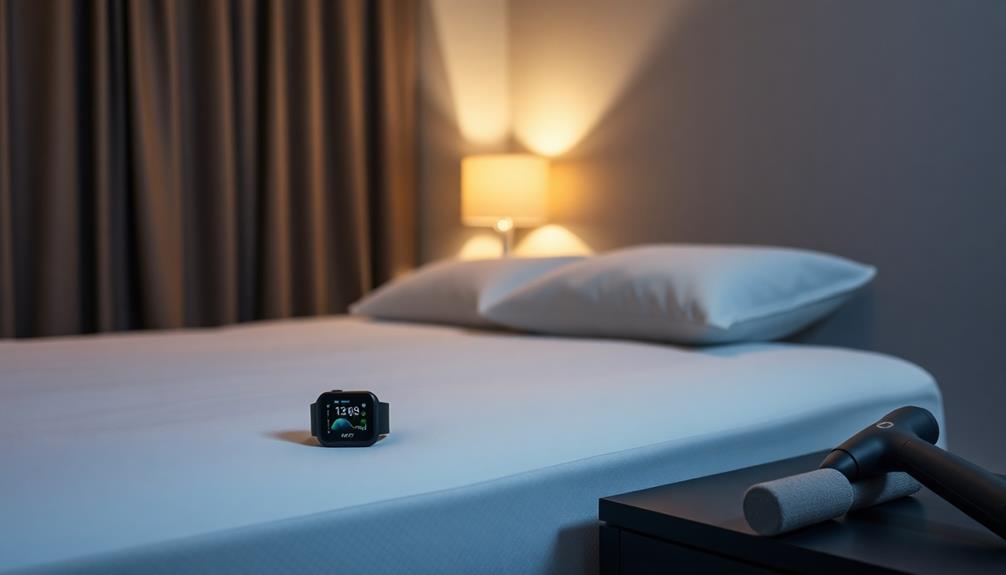
Getting enough sleep is crucial for muscle recovery and growth after strength training. Aim to sleep 7-9 hours each night without interruptions. This allows your body to repair and rebuild muscle tissue. To create a sleep-friendly space:
- Keep your bedroom dark and cool
- Use a comfortable mattress and pillows
- Limit screen time before bed
Sleep supplements like melatonin or herbal teas can improve sleep quality and duration by regulating your natural sleep cycle. This promotes better rest.
Rest days are just as important for recovery. Take 1-2 rest days per week so your muscles can fully recover between workouts. On these days, do light activities like stretching or walking. This promotes blood flow and reduces muscle stiffness. Short 20-30 minute naps can also boost recovery and improve performance.
Quality sleep and rest are essential parts of your training plan, so make them a priority. When you sleep well and allow time to recover, you'll see better results from your hard work in the gym.
Anti-Inflammatory Nutrition Strategies
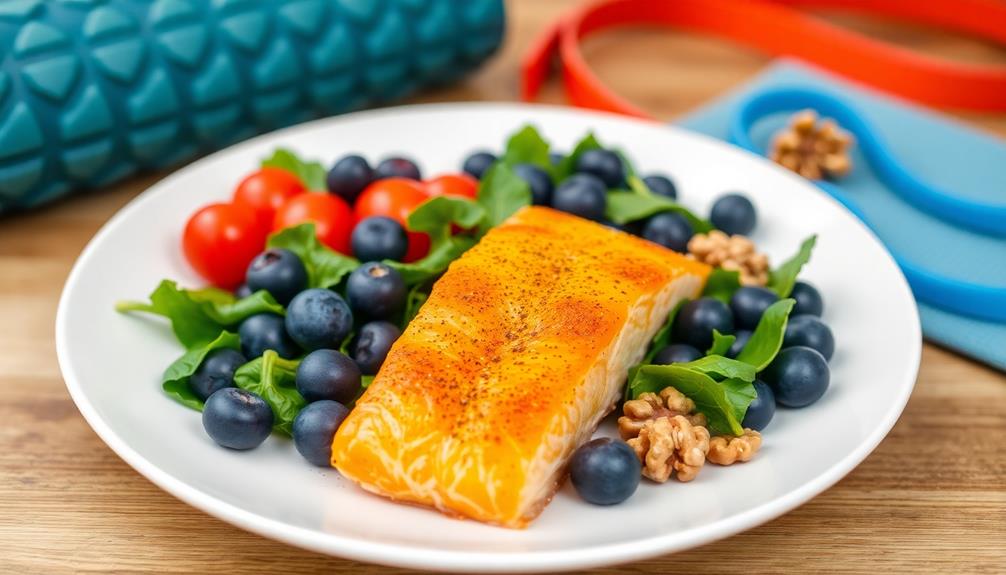
Eating the right foods can help reduce inflammation and soreness after a workout. To feel better, eat plenty of fruits and vegetables, especially berries, leafy greens, and brightly colored produce. These foods have antioxidants that fight inflammation. Fatty fish, chia seeds, and walnuts are also good choices because they contain omega-3 fatty acids.
You can also take supplements to help your body recover. Look for supplements with natural ingredients that have been proven to reduce inflammation and promote healing.
Remember to drink plenty of water to flush out toxins that cause inflammation. Tart cherry juice is another great option because it's known for its strong anti-inflammatory effects. Adding spices like turmeric and ginger to your meals can also be helpful.
Try to avoid processed foods, sugars, and alcohol, as these can make inflammation worse. By following these tips, you'll help your body recover better and may experience less soreness after your workouts.
Targeted Supplement Use
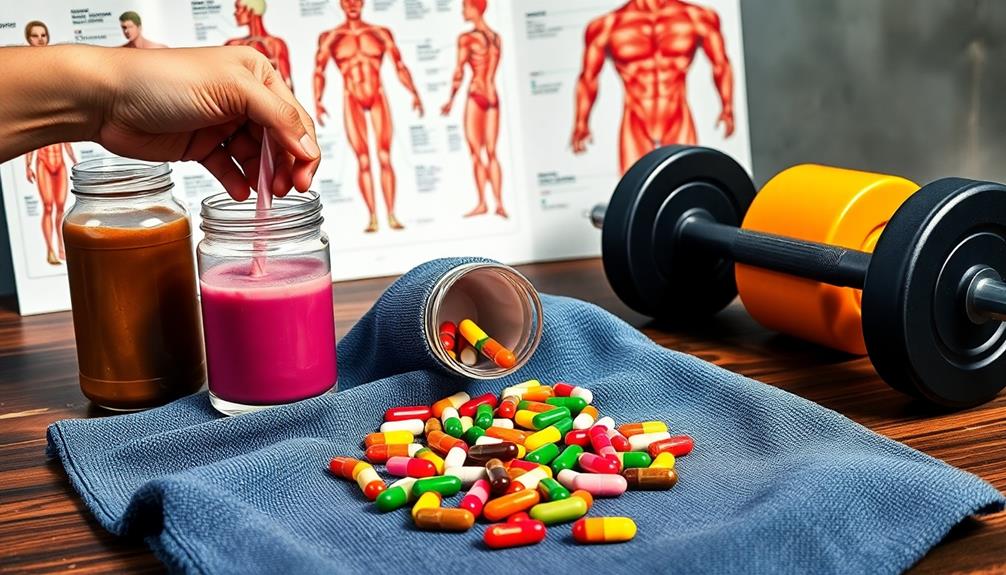
Targeted supplements can help you recover faster after a tough workout. They reduce inflammation, support muscle repair, and lessen muscle soreness in the days after exercise. To get the best results and stay safe, it's important to use them as directed. Think about adding these supplements to your post-workout routine:
- BCAAs (branched-chain amino acids)
- Omega-3s
- Tart cherry juice
BCAAs, especially leucine, help build muscle and prevent muscle breakdown. Omega-3s fight inflammation and may ease discomfort. Tart cherry juice has lots of antioxidants that can lessen muscle damage and inflammation.
Frequently Asked Questions
How Long Does Muscle Soreness Typically Last After Hypertrophy Training?
You'll typically experience muscle soreness for 24-72 hours after hypertrophy training. It's called Delayed Onset Muscle Soreness (DOMS). The intensity varies, but it usually peaks around 48 hours post-workout and then gradually subsides.
Can I Take Painkillers to Reduce Post-Workout Muscle Soreness?
You can take over-the-counter painkillers to reduce post-workout soreness, but it's not always recommended. They might interfere with muscle growth and recovery. Instead, try natural methods like proper nutrition, hydration, and light stretching to ease discomfort.
Is It Safe to Train the Same Muscle Group When Still Sore?
It's generally safe to train sore muscles, but listen to your body. You'll want to adjust your intensity and volume. If you're experiencing sharp pain, it's best to rest. Light exercise can actually help reduce soreness.
Does Muscle Soreness Indicate a Successful Workout or Potential Injury?
Muscle soreness doesn't always mean a successful workout or injury. While it's common after exercise, it's not a reliable indicator of progress. You shouldn't use soreness as your only gauge for workout effectiveness or potential harm.
Are There Specific Exercises That Cause More Soreness Than Others?
Yes, certain exercises can cause more soreness than others. You'll often feel more sore after eccentric movements, compound exercises, and activities you're not used to. Squats, deadlifts, and lunges are notorious for causing intense soreness.

